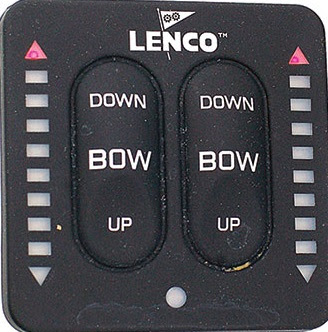How Trim Tabs Work!
Knowing how trim tab work is the first step to using them effectively and making your trip easier.
In an ideal world, your boat will float on plane and move relatively flat and level without any interference from the rudder. But this is in an ideal world. In reality, boats are rarely equally weighted to port and starboard, and adding passengers often destroys the balance that the designers designed in the first place. The good news is there's an easy solution in the form of tabs.
Tip:
"When adjusting truncation tabs for menu correction, it is best to use short bursts of truncation."
Trim marks are a pair of "oars", for lack of a better word, at the transom of your boat. It crosses up and down at a joint located slightly above the bottom edge of the beam. In some cases, these tabs are installed in specially designed pockets so that they do not protrude behind the boat. But they remain recessed, so they do not interact with the flow of water through the structure until they are deployed.
Tabs are controlled at the helm of the aircraft using two buttons or joysticks – one to port and one to starboard – marked “Bow Down” and “Bow Up”. The beauty of these individual controls is dual. First, it allows the tabs to work independently, so you can correct the list to move or move to starboard using a single tab.
Secondly, they are wired so that activating the
controller on the port side tab will deploy the tab on the starboard side of
the transom, and vice versa, so you have intuitive control at the helm. When
you want to lower the port side, simply press "Bow Down" on the port
tab controls, and the starboard tab is deployed to raise the starboard corner
of the transom, lowering the port side. The necessary lift to lower the bow is
created when the tabs begin to interact with the water.
In their fully retracted position, the trim tabs do not interact with the water as it races across the
hull when the boat is on board. However, if you press “bend down” on one or
both of the tab controls on the rudder, the tabs at the stern spread down and
begin to deflect water. This does two things: raise the stern and lower the
bow. And it creates drag, which reduces your efficiency a little. Note that on
inboard-powered boats, this can improve the thrust angle of the props, negating
the increased drag.
You can also use cut marks to level the boat and adjust the
list by sawing the cut mark on the side of the list. When adjusting the trim tabs to correct the list, it is
best to use short bursts of trim, then pause to allow the boat to stabilize so
you can judge the effects of the adjustment. Also get in the habit of making
sure the tabs are fully retracted before pushing the throttle forward each time
you get on the plane so you're not surprised by the roll caused by the tabs.
Most trim mark manufacturers offer an automatic retraction feature for this
reason.
In addition to correcting for a list, trim marks can also be useful to raise or lower the bow of the boat slightly when heading into a quartered sea. You can often improve the ride and reduce the amount of spray by changing the way the bow and spine react to the cut as you cut the faces of the wave.
In the case of a rigid chine boat, lowering the leading edge of the chine
on the windward side by spreading the trim tabs on the other side can drop the spray sooner, reducing the amount that
flies back into your face at the helm. However, lowering it too much can cause
it to hit the face of each wave, resulting in more bombardment than necessary.
In the case of a smooth round boat, you may want to raise the windward side of
the bow. Doing a little experimentation with your boat will reveal which method
best suits your circumstances.
Related Articles:






Comments
Post a Comment